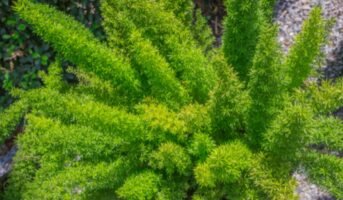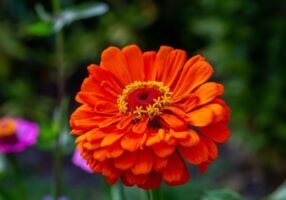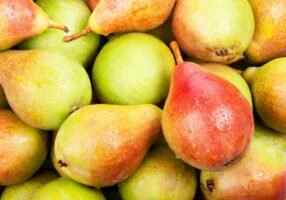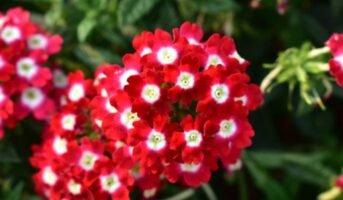Rosa rubiginosa is the botanical name of rose. It is commonly used as a houseplant but the rose bush can also be grown outdoors in your garden or on a balcony.
The rose plant produces flowers of different colours, based on its type. The flowers open at different times throughout the day, depending on the weather conditions. The leaves of the rose plant are green and oval-shaped with pointed tips. They have smooth edges that curl under when they dry out from lack of water or sunlight or from being nibbled by insects such as aphids and bugs.

Source: Pinterest
see also about: Sage rose
Rosa Rubiginosa: Key facts
| Botanical name | Rosa rubiginosa |
| Common name | Bush rose |
| Genus | Rosa |
| Clade | Eudicots |
| Order | Rosales |
| Family | Rosaceae |
| Life cycle | Perennial |
| Mature size | Up to 3 feet |
| Cultivation | Mostly found in Asia, North America and Western Africa, with smaller populations in Europe and North America |
| Benefits | Perfumes, ornaments |
See also: Garden roses: Facts and tips to grow
The history and significance of Rosa rubiginosa
Also known as the sweet briar or eglantine rose, the Rosa rubiginosa has a rich history and cultural and botanical importance. It originated in parts of Asia and Europe. It also holds special importance in Greek mythology. The flower has been a source of inspiration for poets, writers and artists.
Rosa rubiginosa: Description

Source: Pinterest
- Rose is a perennial plant that grows to a height of 3 feet and has round shallow leaves. The foliage is green in colour, and the flowers are white and fragrant. The buds are pink or red, and they appear on a spike.
- In addition to its fragrant flowers, it is usually planted for commercial uses. Roses are perennial plants with woody and thorny stems.
- The leaves of this plant are alternately arranged and possess sharp-tipped oval-shaped leaflets. The fruits of this plant are fleshy and edible when they are ripe and are called rose hips.
See also: Rose flower: 30+ images and over 20 interesting facts about the heavenly flower
Different colours of Rosa rubiginosa
Yellow rose shrub

Red rose shrub

Orange rose shrub
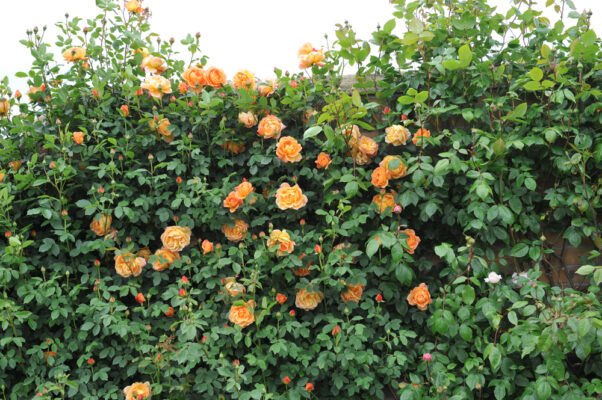
White rose shrub
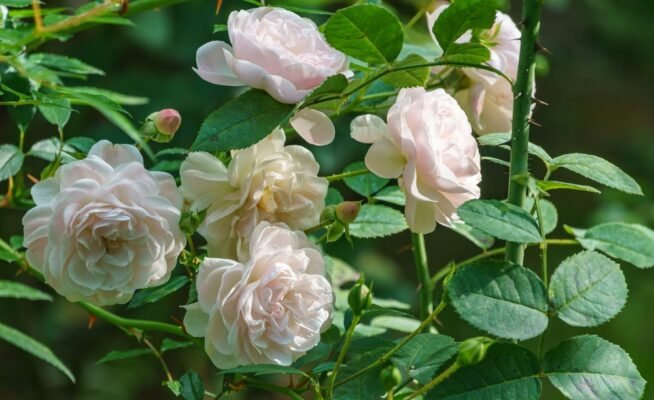
Purple rose shrub
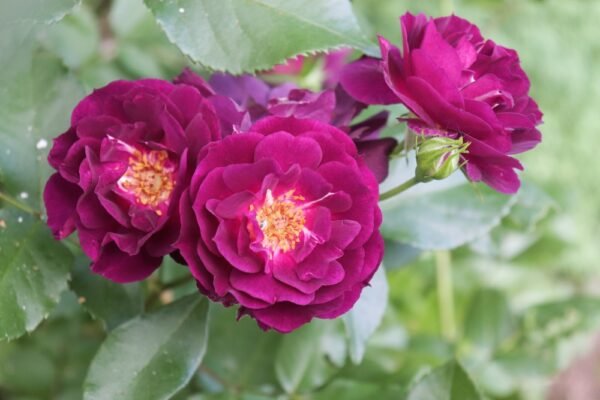
Pink rose shrub

How to grow and propagate Rosa rubiginosa?
Rose plants can be propagated by planting seeds, cuttings or divisions.
Growing roses from seeds take a long time. They are usually grow by propagating them. Seeds should be soaked for 24 hours in a solution of half water and half peroxide or bleach, which kills the seed coat. After soaking, place the seeds on a plate and rinse them with water. Then plant them in the ground, where they will grow into new plants.
Cuttings are taken from mature rose plants and rooted in water. Take care not to damage the stem when cutting it from its parent plant. Place cuttings in a jar filled with water and keep them under bright light for about two weeks before planting them outdoors in their permanent location.
Divisions are made by cutting off sections of an existing rose plant, usually at least one inch above the root ball. Make sure you do not allow any roots to remain attached to the stem when dividing. After cutting away all leaves, carefully remove any remaining fleshy material around the base where you made your cut. This is where new roots will grow. Plant this piece of the stem into some soil at least one inch deep, where it will stay alive until it produces more growth.
Rosa rubiginosa: A guide to care and cultivate
- Ideally, your rose plant should be placed in an area that receives six to eight hours of direct sunlight every day. Roses benefit from direct sunlight, but you should be cautious in the summer months when high temperatures may cause them to go dormant.
- Water the plant immediately after planting to keep the soil moist. Continue to keep an eye on the soil to make sure it stays damp.
- The ideal temperature for your roses is between 60 and 70 degrees Fahrenheit. It’s important to remember that container roses are more susceptible to cold weather than ground plants as winter approaches.
- Plants are often attacked by insects called aphids, which drain water from your plants’ leaves. Despite being indoors, roses require frequent inspection, which is why they should be checked frequently.
- The rose plant is a perennial, meaning it will live for years in the same place. Its roots are deep and can spread out over a large area, so it’s good for gardens or even as a border.
- It’s also easy to grow, so even if you don’t have much experience with gardening, you should be able to manage it successfully.
- This plant requires little care: once planted, the only thing you need to do is water it regularly and make sure that the soil doesn’t dry out too quickly.
- You should also fertilise the soil every few weeks with a dosage of 25% nitrogen and 50% potassium. However, this may vary depending on what type of soil you have.
Rosa rubiginosa: A versatile shrub for gardens
Rosa rubiginosa is a versatile shrub that adds to the beauty of the garden. It has benefits too making it functional. The delicate flowers of the rose plant add to look of any landscape. It can be used as hedges and for other purposes such as providing game cover and stabilising slopes. The thorny stem of the rose bushes make it a natural fence for gardens. The flower also provides a good habitat and food for birds and insects. The fruit of the rose plant is rich in Vitamin C and can be used to makes jams, jellies and herbal teas.
Rosa rubiginosa: Uses
General uses
- Most people are familiar with roses as ornamental plants grown for their flowers in the garden and sometimes indoors as well.
- Also, they are used in the production of commercial perfumes and cut flower crops.
Medical uses
- Heart disease can be treated with it, and high blood pressure can be reduced.
- Due to its antiseptic effect, rose petals are beneficial for treating eye problems such as burning sensations. Rose petal extract may be used as a drop or eye wash to relieve eye problems.
- The antibacterial, antiseptic, and anti-inflammatory properties of rose essential oil make creams prepared from it effective for treating dry or inflamed skin.
- In addition to helping with insomnia and blood pressure, rose essential oil is also effective as aromatherapy. In the cosmetic industry, rose extracts or oils are frequently used in soap, body wash, perfumes, body sprays, etc., etc.
Rosa rubiginosa: Toxicity
It is imperative to note that roses are not toxic to pets, which makes them a relatively safe landscaping option for pet owners. Cut flowers are a suitable option for indoor arrangements, as well, since they will not harm your indoor pets if they consume any fallen petals.
FAQs
What makes a rose the queen of flowers?
Roses are the queen of flowers because of their beautiful look, pleasant smell, mesmerising form, and ease of care.
What is the rose flower's botanical name?
Rosa rubiginosa is the botanical name of the rose.
| Got any questions or point of view on our article? We would love to hear from you. Write to our Editor-in-Chief Jhumur Ghosh at [email protected] |
Housing News Desk is the news desk of leading online real estate portal, Housing.com. Housing News Desk focuses on a variety of topics such as real estate laws, taxes, current news, property trends, home loans, rentals, décor, green homes, home improvement, etc. The main objective of the news desk, is to cover the real estate sector from the perspective of providing information that is useful to the end-user.
Facebook: https://www.facebook.com/housing.com/
Twitter: https://twitter.com/Housing
Email: [email protected]

